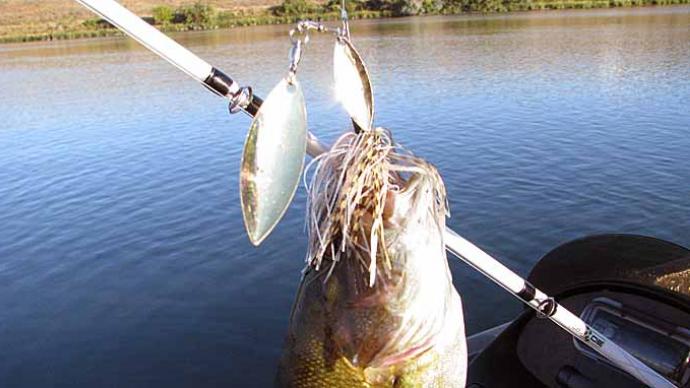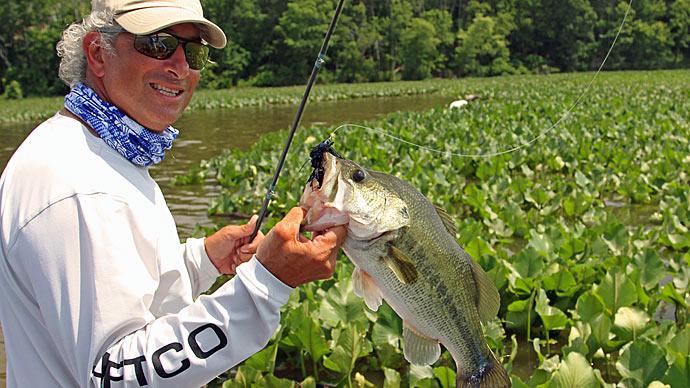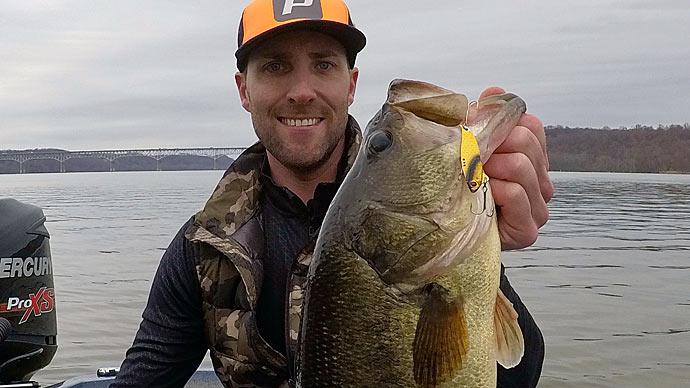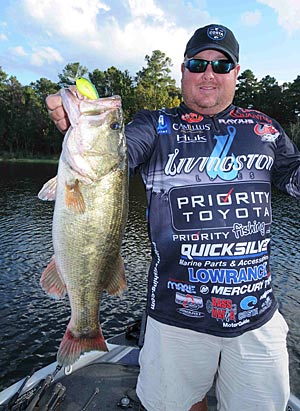
Bass fishing on tidal rivers has its ups and downs every day.
An inland river flows only one way, and its water level is usually dictated by rain. According to Bassmaster Elite Series pro Jacob Powroznik, tides determine the high and low levels of coastland rivers that connect to the oceans.
The Virginia pro has gained plenty of experience playing the tides while fishing his home waters of the James River, a tidal waterway flowing into the Chesapeake Bay. He notices tidal waters bass are less affected by weather conditions such as cold fronts as the fish are by water level changes on those waters. “It is more about the tide,” he says. “The tide plays it all. I can show you one of the best places on the James River, but if I don’t tell you what tide to fish it on, you will never catch a fish there.”
So, studying the local tide charts of the waterway you will be fishing is the key to catching tidal waters bass. Powroznik suggests you can find tide charts on the Internet with a Google search of the waterway you intend to fish. Tide charts are also available on Navionics software for your electronics.
Studying the tidal charts will help you determine the critical times to fish the tidal waters for bass. Powroznik claims the best fishing times on tidal waters are usually the last three hours of the outgoing tide and the first three hours of the incoming tide. “The bass feed well when the tide is out because it congregates them out around a piece of wood or something that will hold them when the tide goes out,” Powroznik says. “When it is high tide, everything turns into mud.”
High tide fishing can be good in the spring because bass move up on the flats to spawn and will stay there even in low tide as long as there are 6 to 8 inches of water left on the flats. “You just can’t get your boat up there to the fish without spooking them,” he says.
Low tide fishing is best for the rest of the year because it causes bass to congregate on isolated wood, rocks, or rock jetties. Powroznik suggests this makes bass more predictable to find and easier to catch.
The targets he fishes on tidal rivers depends on the predominant type of cover available on that particular waterway. He notes the James River has a variety of cover such as grass, lily pads, cypress trees, logs, and docks. The tidal waters of the Potomac River have masses of grass flats, and the St. Johns River has mainly hydrilla beds, lily pads, and eelgrass.
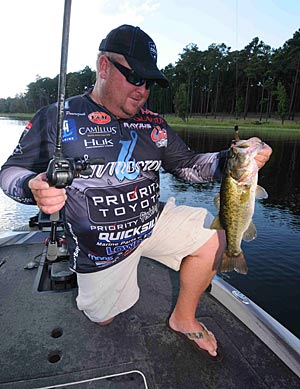
Powroznik generally fishes any cover he can find 2 to 3 feet deep during low tide. He claims most bass on tidal rivers will usually be less than 8 feet deep unless the waterway features gravel pits with deeper water.
The touring pro favors about a handful of lures for catching bass year-round on tidal water. His lure choices are based on the cover he is targeting. “If I am fishing around grass, I will start with a swim jig or Chatterbait just to see what kind of mood the fish are in,” he says. “Then I will flip or cast a worm around to catch some. For the most part, on these tidal rivers, a worm is kind of hard to beat. I don’t know why. It’s just a regular Texas-rigged worm.” His favorite plastic worm for tidal water is a 5.75-inch V & M Baits J-Mag worm.
His other favorite lures for tidal river bass include a Livingston Lures Vapor 50 crankbait, Livingston Lures Primetyme SQ 2.0 square bill crankbait, spinnerbait, jig, and drop-shot finesse worm. “When the tide goes out, a lot of our grass (on the James) stops right on the edge of the drops, so I pitch a drop shot right up to the edge of the grass and catch a lot of fish that way,” Powroznik says.
No matter how far up a tidal river he fishes, Powroznik notices the tides affect the water levels throughout the entire river. Saltwater incursion from high tide affects bass in the lower part of the river closer to the ocean. Powroznik notices in the spring that creeks on the lower river will have an excellent freshwater flow from rain runoff. However, dry weather in the summertime causes saltwater to back up in the creeks during high tide. So, bass tend to migrate to the backs of the creeks in the summertime during high tide to avoid the saltwater.
Tidal rivers harbor plenty of keeper-size bass, and some waterways occasionally yield big fish. “A good river bass is usually about 2 3/4 to 4 pounds,” Powroznik says. The tournament veteran says he has caught a bass weighing about 11 pounds from the James River, which has been stocked with Florida-strain largemouth bass. He has also caught two bass weighing more than 8 pounds and several 7-pounders from his home river.
In addition to his home waters of the James River, Powroznik’s other top picks for catching tidal waters bass are St Johns and Potomac rivers and the Upper Chesapeake Bay.
BassResource may receive a portion of revenues if you make a purchase using a link above.


